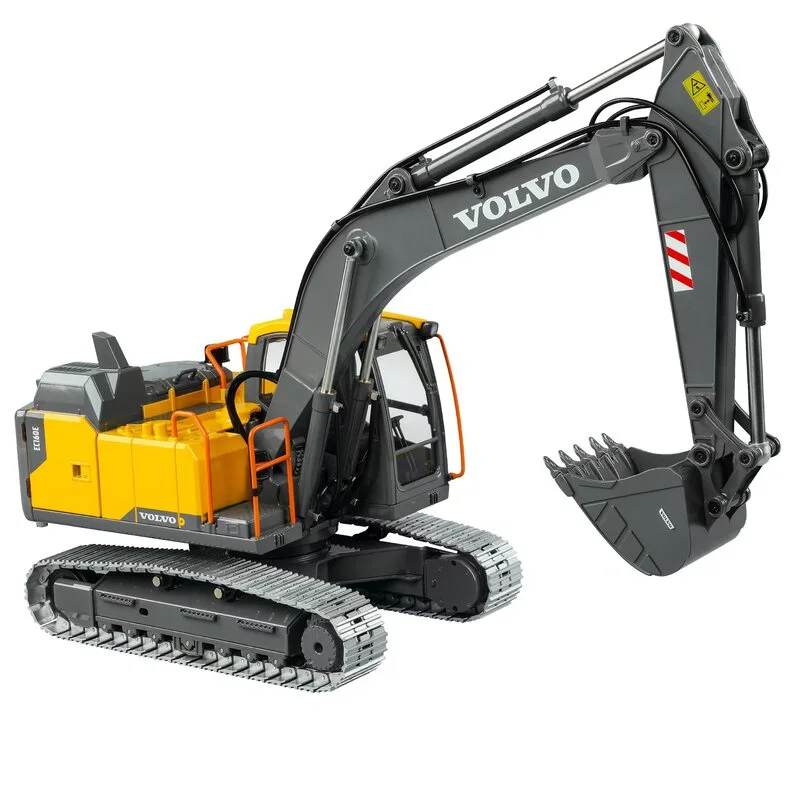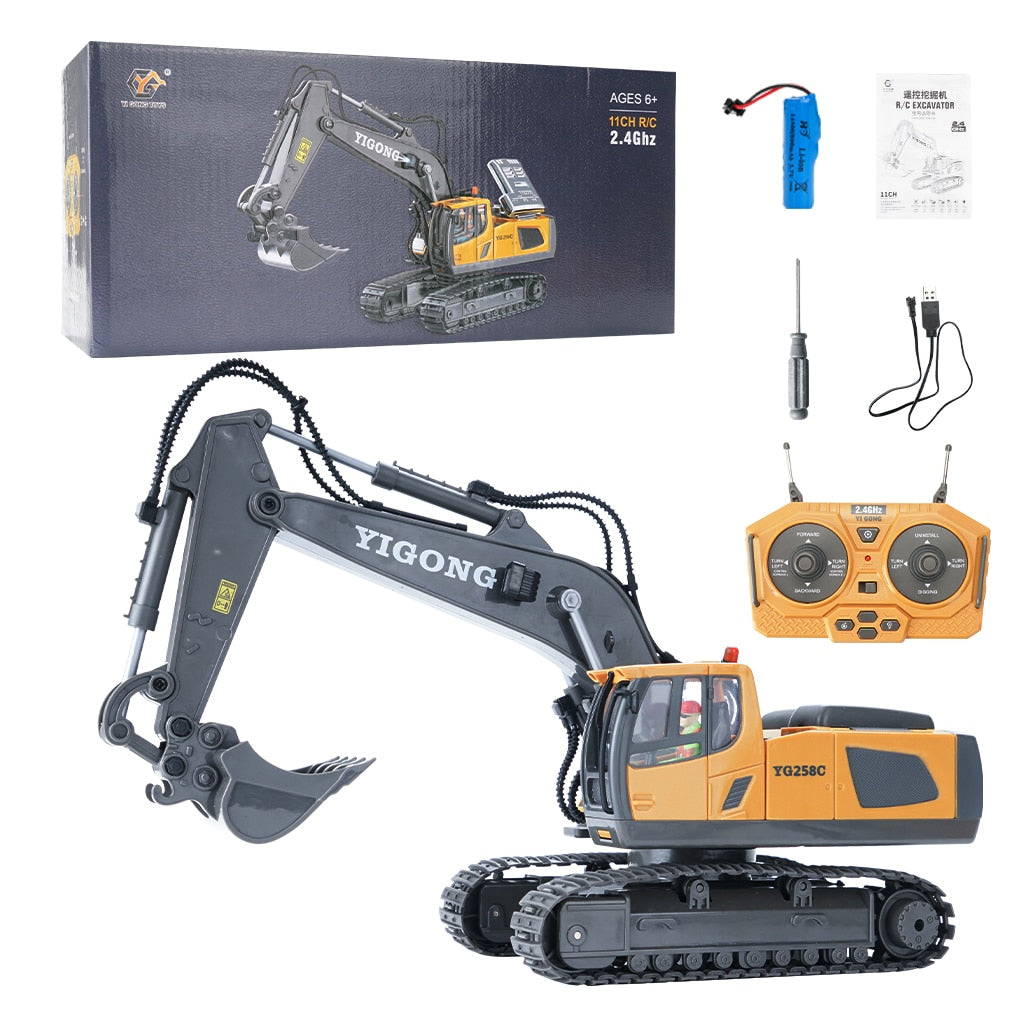The Important Functions of Excavator That Make It a Must-Have Tool
Excavators are indispensable in the construction and landscape design sectors. Their functional attachments enable a series of tasks, from excavating to demolition. Additionally, they flaunt premium excavating depth and reach, powered by durable engines. Driver convenience and small styles improve usability in various atmospheres. What genuinely sets excavators apart are their advanced hydraulic systems and resilience. Recognizing these attributes can clear up why they are taken into consideration essential devices on any type of work website.
Functional Accessories for Improved Performance
Excavators are powerful makers on their own, the enhancement of functional accessories substantially boosts their capability. These add-ons transform a standard excavator into a multi-purpose tool, suitable for a range of tasks. Buckets, for example, can be found in numerous sizes and shapes, enabling operators to dig, scoop, and relocate materials efficiently. Hydraulic thumbs can be included for boosted gripping and handling of large products, such as logs or rocks.Furthermore, specialized accessories like breakers and augers enable for boring and demolition work, increasing the excavator's utility on construction websites. remote control excavator. Grapples are an additional alternative, suitable for arranging and relocating debris. This adaptability not just boosts performance but also decreases the need for several machines, conserving time and expenses. By outfitting excavators with the appropriate attachments, operators can deal with diverse jobs, making them essential in the building and construction industry
Superior Excavating Depth and Reach
Excavators are made with exceptional digging deepness and reach, allowing them to maneuver in limited areas and accessibility hard-to-reach locations. This ability is important for numerous building and construction and excavation tasks, where conventional equipment might drop short. With flexible boom arms and extendable tracks, excavators can conveniently browse uneven terrain while keeping stability.The excavating deepness can differ significantly among models, usually varying from 10 to 25 feet, depending upon the design and purpose. This feature allows drivers to excavate structures, trenches, and other deep frameworks effectively. Furthermore, the reach of an excavator enables for precise excavating and product handling without repositioning the device often, conserving time and labor costs.Ultimately, the premium digging deepness and reach of excavators make them important for experts seeking to finish complex tasks with precision and efficiency. Their versatility enhances efficiency on task sites, showcasing them as a vital tool in modern building and construction.
Powerful Engine Performance

When it comes to performance and efficiency on building websites, powerful engine efficiency plays a crucial duty in the abilities of an excavator. A robust engine produces substantial horse power, allowing the device to take on heavy-duty jobs effortlessly - remote control excavator. This stamina converts right into faster cycle times, making it possible for operators to total tasks a lot more quickly.Additionally, powerful engines offer the essential torque to take care of challenging terrains and differed tons, making sure that the excavator can execute efficiently under different conditions. Whether it is lifting, digging, or relocating products, the engine's efficiency directly impacts the overall functional efficiency of the machine.Furthermore, improvements in engine technology have actually resulted in enhanced fuel performance, decreasing operational expenses while preserving power result. Eventually, the engine's efficiency offers as the backbone of an excavator, affirming its standing as a vital tool in the building market
Advanced Hydraulic Systems

Enhanced Raising Capacity
A significant enhancement in raising capacity can be credited to advanced hydraulic systems discovered in modern excavators. These systems make use of high-pressure fluid to create better pressure, allowing operators to lift larger tons effortlessly. The engineering behind these hydraulics guarantees peak performance, providing an impressive power-to-weight proportion that improves general performance. Consequently, excavators can deal with requiring tasks, such as raising large materials or tools, without jeopardizing security. Furthermore, the robust layout of hydraulic components adds to raised resilience and integrity, making them suitable for various building and construction atmospheres. This enhanced lifting capability not just decreases the moment needed for projects but additionally lessens the requirement for added equipment, confirming important for both productivity and cost-effectiveness in the construction market.
Enhanced Precision Control
Typical excavators typically struggled with accuracy, remote control excavator modern hydraulic systems have changed control devices, enabling drivers to perform jobs with impressive precision. These innovative systems make use of proportional control shutoffs that permit smoother and more receptive activities, significantly reducing the margin for mistake. Operators can now finely tune the excavator's movements, making it less complicated to navigate tight rooms and take care of delicate products. Boosted comments systems further educate drivers of real-time efficiency, making certain excellent coordination in between the maker and operator. This enhanced accuracy not only enhances effectiveness yet additionally enhances safety on work websites, minimizing the danger of mishaps. Consequently, modern-day excavators outfitted with advanced hydraulic systems are vital devices for building and excavation jobs calling for precise precision.
Driver Convenience and Presence
Driver convenience and exposure are important elements in the layout of modern-day excavators (remote control excavator). Features such as ergonomic seat style, improved visibility alternatives, and effective control designs substantially enhance the driver's experience and productivity. Focusing on these facets guarantees that drivers can function successfully and safely in different conditions
Ergonomic Seat Style
Convenience and presence are vital in excavator design, with the ergonomic seat playing a vital role in boosting the operator's experience. An ergonomic seat is crafted to sustain the driver's body, lowering fatigue throughout long hours of operation. Adjustable attributes, such as seat elevation, backrest angle, and back support, accommodate specific choices and promote suitable pose. These changes boost comfort and make it possible for the operator to keep concentrate on tasks without pain. Additionally, a properly designed seat can offer better lateral support, enabling for smoother maneuvering when the excavator is in operation. This thoughtful layout not just enhances performance yet additionally contributes to total security, guaranteeing that operators can do their responsibilities successfully and successfully.
Boosted Presence Features
The design of an excavator extends past just the seat, with boosted exposure features playing a substantial role in driver convenience and overall safety and security. Huge home windows and tactically located mirrors offer operators with a clear sight of their surroundings, decreasing dead spots. This design consideration enables for better spatial awareness, which is essential in active job settings. In enhancement, many excavators integrate rearview cameras and advanced monitoring systems that help operators in steering limited areas. The integration of these visibility features not just promotes security but likewise decreases driver exhaustion by making it possible for much easier tracking of workplace. Ultimately, boosted visibility contributes to much more effective operations and aids ensure that excavators can perform their jobs properly and safely.
Control Layout Effectiveness
While handling facility work sites, a reliable control layout substantially boosts both operator comfort and visibility. A properly designed control setup warranties that operators can access crucial features with marginal effort, minimizing tiredness during long hours. Ergonomic joystick positionings and intuitive switch plans enable for smooth procedure, enabling drivers to preserve concentrate on the job at hand. Additionally, clear visibility of both the workplace and the control panel is crucial for safety and precision. Modern excavators frequently integrate adjustable seating and control settings to suit various operator preferences, additionally improving comfort. Ultimately, a thoughtfully designed control design not only boosts efficiency however also fosters a safer working environment by enabling drivers to respond quickly to altering conditions.
Compact Style for Urban Environments
As city construction sites usually encounter room constraints, a small design ends up being necessary for excavators operating in these atmospheres. These devices are crafted to browse limited rooms, allowing for efficient ability to move in crowded work sites. A decreased impact enables them to work carefully to existing frameworks, decreasing interruption and optimizing productivity.The compact layout commonly includes shorter tracks and a tighter turning radius, facilitating operation in slim alleys and confined locations. Moreover, lightweight materials contribute to reduce of transportation, making it less complex to relocate the excavator from one location to one more within the urban landscape.Additionally, lots of compact excavators are equipped with attributes such as extendable arms and functional add-ons, enhancing their capability while preserving a small dimension. This adaptability enables operators to take on a range of tasks, from excavating to demolition, all while fitting effortlessly into the constraints of city environments.

Resilience and Maintenance Considerations
Longevity stands as a crucial consider the efficiency and durability of excavators, especially sought after city environments. These equipments undergo extensive conditions, consisting of varying soil kinds, severe temperature levels, and high-frequency usage. High-quality products and durable building and construction are necessary for making sure that excavators can stand up to these challenges without compromising functionality.Regular maintenance is equally vital in preserving resilience. Scheduled evaluations, prompt oil adjustments, and the substitute of worn parts add substantially to an excavator's life-span. Operators has to likewise take notice of hydraulic systems, tracks, and undercarriages, as these components often birth the brunt of wear and tear.Investing in durable excavators with comprehensive upkeep strategies boosts integrity and reduces downtime, eventually leading to enhanced efficiency on building and construction websites. Recognizing the interplay between resilience and maintenance is important for any person taking into consideration the procurement of an excavator for metropolitan projects.
Often Asked Inquiries
Just How Do Excavators Contrast to Other Building And Construction Equipment?
Excavators attract attention among building tools because of their versatility, making it possible for tasks such as excavating, training, and grading. Contrasted to others, their hydraulic capabilities provide better performance and power, making them important on different task websites.
What Safety And Security Features Are Consisted Of in Modern Excavators?
Modern excavators integrate different safety and security functions, consisting of rollover security systems, alarm systems, and progressed visibility improvements. These components function with each other to lessen dangers, making certain operator safety while enhancing effectiveness on building and construction websites and other demanding settings.

Can Excavators Be Utilized in Wintertime Issues?
Excavators can indeed be utilized in winter problems, given they are outfitted with suitable winter accessories and safety measures are taken. Proper maintenance and changes enhance their performance, making sure reliable procedure regardless of challenging climate situations.
What Is the Average Life Expectancy of an Excavator?
The average life-span of an excavator generally varies from 7,000 to 10,000 hours of operation. This duration can considerably depend upon maintenance practices, running problems, and the certain version's longevity and layout functions.
Just how Do I Choose the Right Excavator Size for My Task?
Choosing the ideal excavator dimension includes assessing project scope, site problems, and product types. Take into consideration aspects like reach, deepness demands, and weight ability to ensure maximum effectiveness and safety throughout operation. Size issues substantially in job success. Furthermore, the reach of an excavator permits for exact excavating and material handling without repositioning the maker regularly, saving time and labor costs.Ultimately, the remarkable excavating deepness and reach of excavators make them indispensable for experts looking for to complete intricate jobs with precision and effectiveness. Comfort and presence are paramount in excavator layout, with the ergonomic seat playing an essential function in boosting the operator's experience. The style of an excavator prolongs past just the seat, with boosted exposure attributes playing a considerable function in driver convenience and total safety. Modern excavators commonly integrate flexible seating and control settings to fit numerous driver choices, additionally boosting convenience. Light-weight materials contribute to reduce of transport, making it simpler to move the excavator from one area to an additional within the urban landscape.Additionally, several portable excavators are geared up with features such as flexible accessories and extendable arms, enhancing their capability while maintaining a tiny dimension.